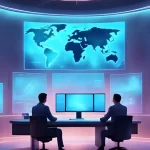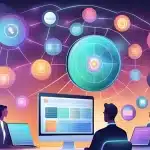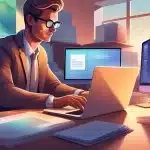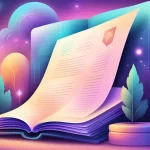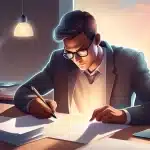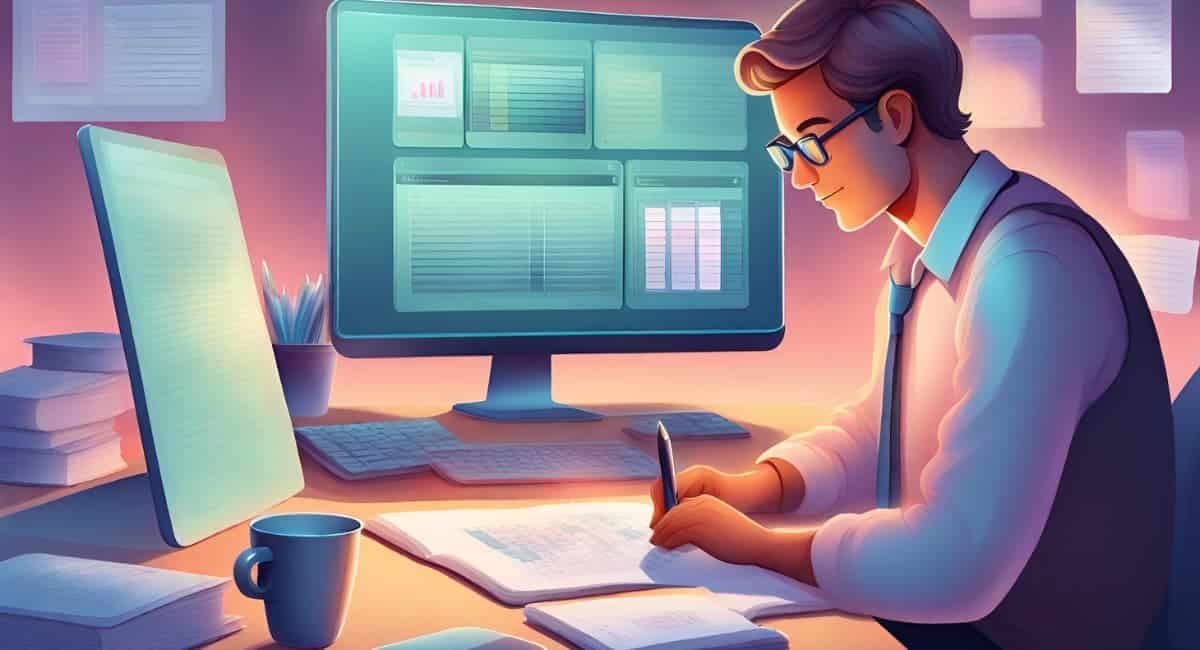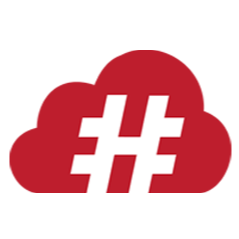Procurement software is a digital solution that automates and streamlines the purchasing process, helping businesses manage suppliers, track spending, and ensure transparency. Inefficiencies don’t just slow down operations, they also can weaken a company’s competitiveness.
Malaysia has seen manual procurement cause inefficiencies and financial losses, from millions wasted on projects to RM13.07 million lost from flawed emergency processes. With 37% of procurement teams investing in software to reduce costs, the message is clear: businesses that don’t modernize risk falling behind.
You can try our free demo and read more in this article, which explores the best procurement software in Malaysia to help you choose a solution that reduces risks, improves efficiency, and supports long-term growth.
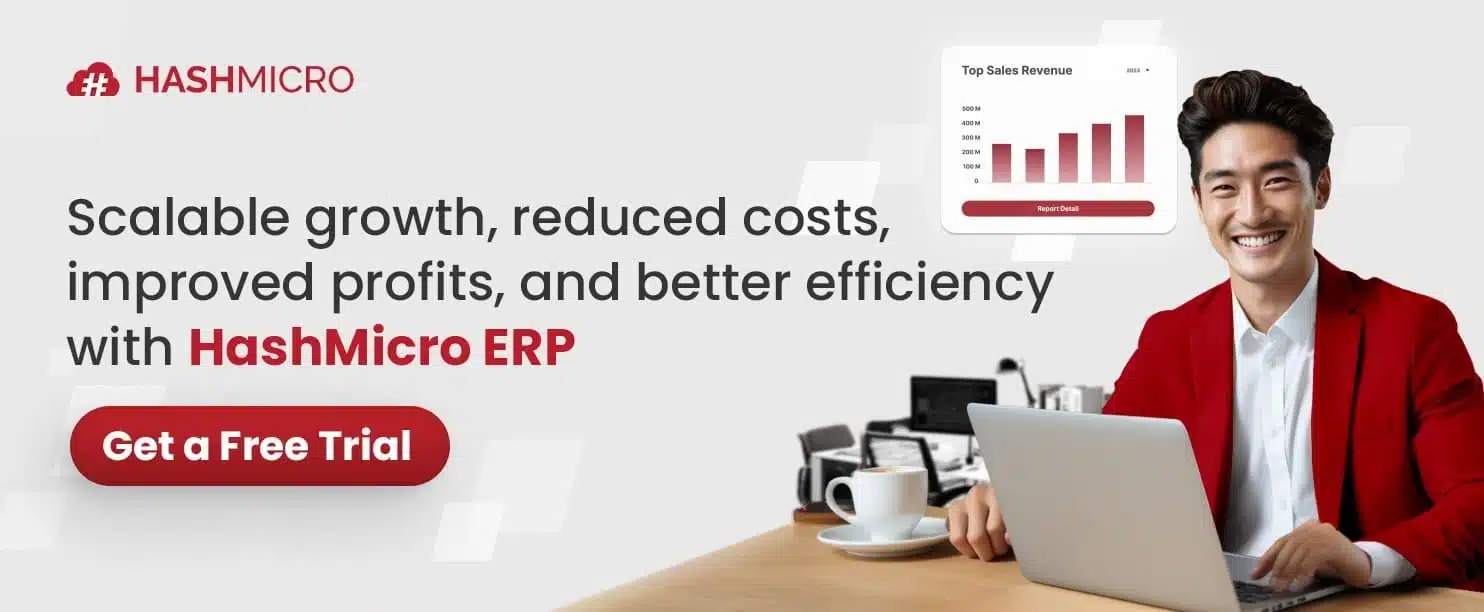
Key Takeaways
|
Before we break down the details, let’s take a moment to highlight some of the best choices worth your attention.
Best Procurement Software
Based on my research and evaluation of multiple solutions on the market, the following is a shortlist of the best procurement software Malaysia. These platforms were chosen for their efficiency, user-friendly interfaces, integration capabilities, and ability to optimize procurement processes.
Best because
The best end-to-end solution for all types of business needs
Best Because
Provides a cloud-based procurement platform
Best Because
End-to-end solution that automates the payables cycle.
Best Because
Software that specializes in providing solutions for manufacturers.
Best Because
Aims to make purchasing straightforward and efficient.
Best Because
Integrated procurement and vendor management software.
Best Because
Provides end-to-end processes that help drive collaboration.
What is Procurement Software?
Procurement software is a digital tool that helps businesses manage the purchasing of goods and services. It automates tasks from requisitions and purchase orders to invoice matching and payment, making procurement faster and more efficient.
Beyond automation, procurement software Malaysia provides valuable insights through data analytics. It helps businesses identify cost-saving opportunities, improve supplier relationships, and maintain compliance with industry standards. This software is essential for companies looking to streamline their operations and reduce unnecessary spending.
Hashy AI Fact

Need to know!
Handle vendor interactions by inviting selected vendors, sending tender forms, and tracking quote submission deadline. Ensuring a smooth and timely tender process with the help of Hashy AI from HashMicro.
Request a free demo today!
What Are the Benefits of Procurement Software
Procurement software plays a key role in helping Malaysian businesses manage purchasing with greater speed, clarity, and strategic control across their operations.
1. Improved efficiency: Procurement software replaces time-consuming manual tasks with automated workflows. Activities like creating purchase orders, routing approvals, and matching invoices can be completed much faster, allowing teams to focus on more valuable work.
2. Better visibility and control: All procurement data is stored in one centralized system, making it easier to monitor spending, track order progress, and ensure compliance. This transparency helps businesses make more informed decisions and avoid unnecessary errors.
3. Stronger supplier management: Supplier information such as contracts, performance history, and communication records is organized in a single platform. This makes it easier to evaluate vendors, negotiate better terms, and maintain productive relationships.
4. Cost savings: With clearer data and automated processes, businesses can reduce operational costs more effectively. The system helps identify spending inefficiencies, prevent duplicate payments, and uncover opportunities for bulk purchasing or supplier consolidation.
5. Lower risk and better compliance: Every transaction is documented and easy to audit. This helps businesses stay compliant with internal policies and industry regulations. It also allows teams to detect potential issues early, such as inconsistent supplier performance.
6. More informed decision-making: e-Procurement software provides real-time insights into spending patterns and supplier behavior. With this information, procurement leaders can adjust strategies, plan more effectively, and support long-term business goals with confidence.
14 Best Procurement Software for Your Business
1. HashMicro procurement software Malaysia
HashMicro Procurement is a software that helps companies manage their buying process more easily and effectively. It is used by more than 2,000 clients, including well-known companies like Abbot, Danone, and Bank of China, demonstrating that the system works across many industries.
The main strength of HashMicro is its flexibility and how it is built to grow together with a business. Since every company has its own way of working, the software can be adjusted to fit each business. It can also connect with other applications that a company already uses, making the entire process smoother and more efficient.
Best choice for businesses that want to save time, reduce mistakes, and stay competitive. Discover how HashMicro Procurement can streamline your purchasing process and reduce operational risks. Request a free demo now and see how it can work for your business.
Best Features
- Purchase management: Easily turn purchase requests into orders and send quotes to suppliers.
- Approval system: Approve or reject purchase requests from across departments with a single click.
- Vendor portal: Vendors can share product catalogs and join tenders to offer the best deals.
- Supplier rating: Rate vendors based on quality, price, delivery time, and service.
- Blanket orders: Set up recurring orders at agreed prices and schedules.
- Landed cost calculation: See the actual cost of products by including taxes, shipping, insurance, and currency conversion.
| Pros | Cons |
|
|
Pricing: Package-based; final quote depends on modules & scope—per the source you provided

HashMicro Procurement stands out as a comprehensive solution to maximize operational efficiency. Learn about the software’s pricing scheme by clicking the banner below.
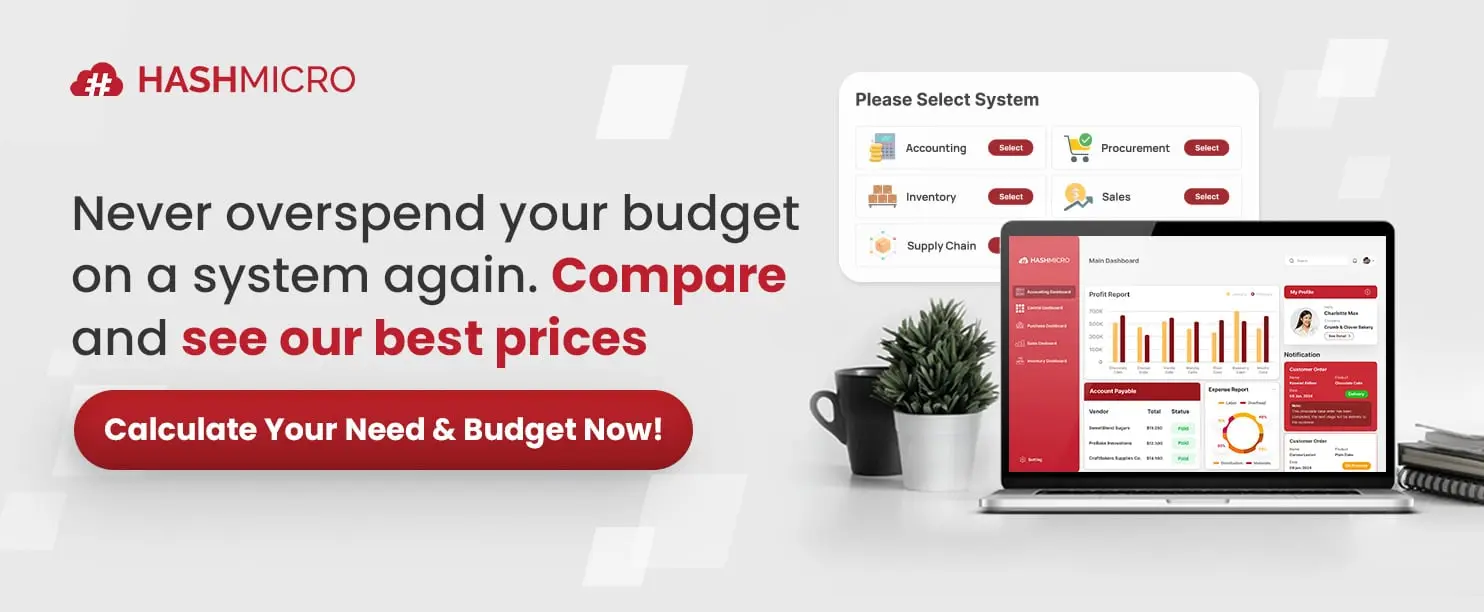
2. SAP Ariba

SAP Ariba simplifies procurement by offering guided buying and spot buy capabilities, along with supplier and catalog enablement.
Best features:
- Global supplier network: Access to a vast network of suppliers for better sourcing options.
- E-sourcing and catalog capabilities: Streamlined sourcing and e-procurement software with robust catalog management.
- Automated invoice management: Efficient handling of invoices to reduce manual workload.
- Spend visibility and analytics: Detailed insights into spending for better financial control.
| Pros | Cons |
|
|
Pricing: Available upon request (custom quote).
3. Tipalti
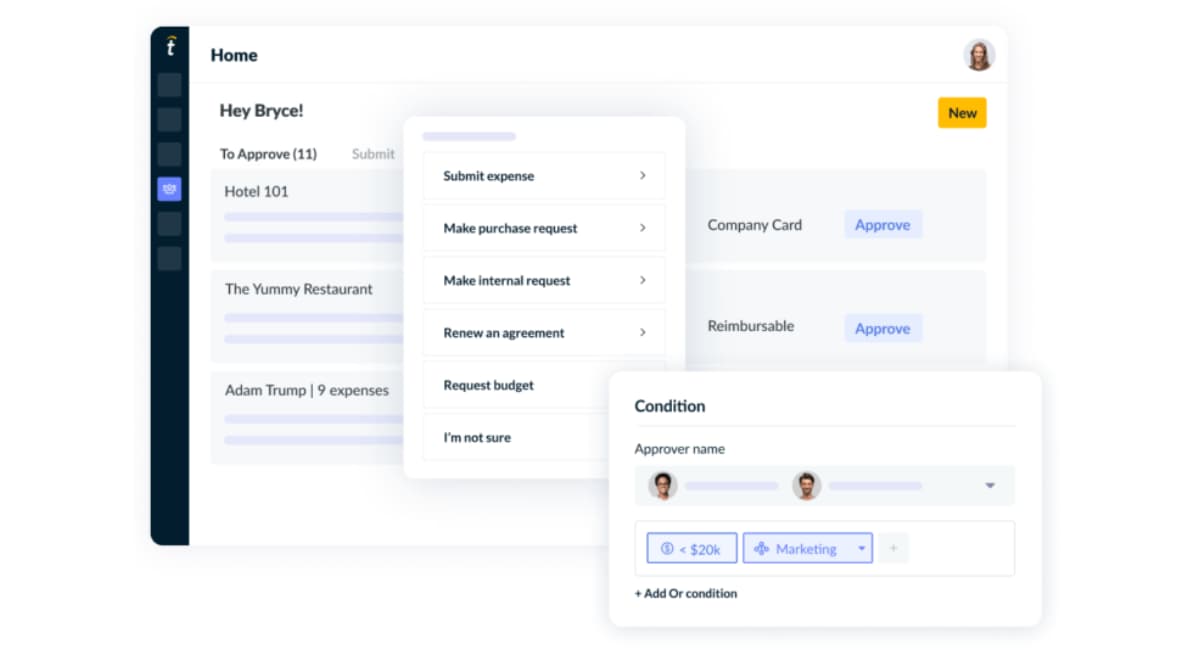
Tipalti is an end-to-end solution that automates the payables cycle, from procurement and supplier onboarding to invoice processing, outbound payments, and reconciliation. It is designed to eliminate up to 80% of manual workload, making it a highly efficient choice for managing global payments to suppliers, affiliates, freelancers, and partners.
With features like OCR invoice scanning, multi-entity support, and ERP integrations, Tipalti streamlines financial operations and supports compliance with global tax laws.
Best features:
- Global payments: Facilitates payments to 196 countries in local currencies.
- Supplier management: Simplifies onboarding and the management of supplier information.
- Invoice automation: Utilizes OCR technology for invoice scanning and processing.
- Financial reconciliation: Offers instant reconciliation with ERP integrations.
| Pros | Cons |
|
|
Pricing: From RM405/month (USD 99/month).
4. ADAM

ADAM is a cloud-based procurement system that specializes in enhancing daily operations for businesses, aiming to improve sales and revenue.
This purchase order software is equipped with an integrated set of tools that streamline inventory organization, customer and contact management, finances, and accounting, thereby boosting productivity and profitability.
Best features:
- Inventory management: Keeps track of stock levels and helps maintain optimal inventory.
- Sales order processing: Streamlines the process from order taking to fulfillment.
- Purchasing and receiving: Manages the procurement cycle efficiently from purchase to delivery.
- Financial management: Integrates accounts payable, accounts receivable, and the general ledger.
| Pros | Cons |
|
|
Pricing: Available upon request.
5. Syspro
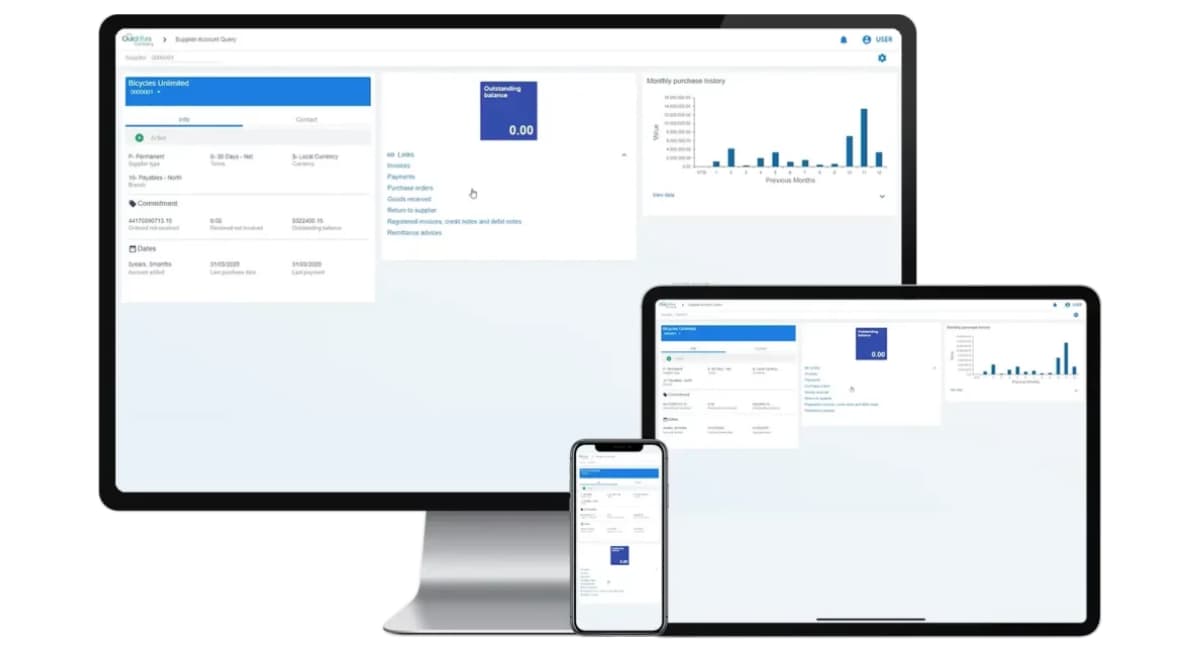
Syspro is an enterprise resource planning (ERP) software that specializes in providing solutions for manufacturers and distributors. It offers a range of functionalities, including procurement software, inventory management, sales order processing, and financial management.
Syspro’s focus on industries such as food, beverage, and fabricated metal makes it an excellent fit for businesses within these sectors. Its scalability allows for customization to meet the evolving needs of companies of all sizes.
Best features:
- Industry-specific solutions: Tailored features for sectors like food and beverage, electronics, and more.
- Scalability: Ability to add or remove modules as business needs change.
- AI and IoT integrations: Advanced integrations for a smarter, more connected experience.
- Hybrid deployment: Offers both cloud-based and on-premise deployment options.
| Pros | Cons |
|
|
Pricing: Available upon request.
6. Ecount
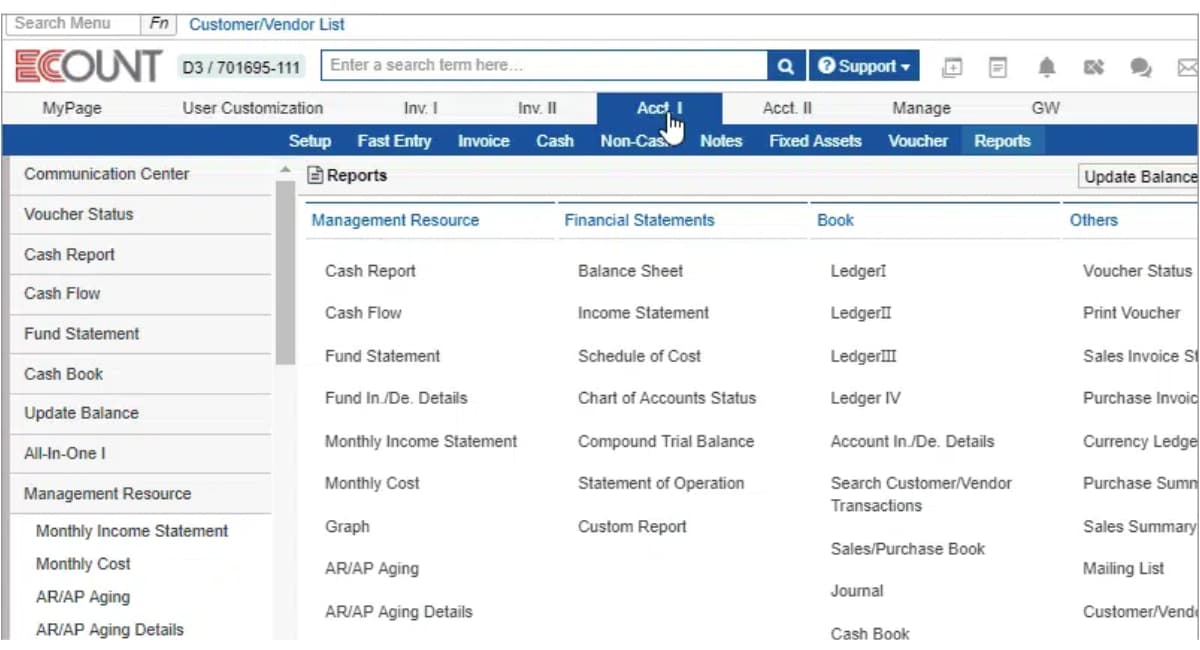
Ecount is a cloud-based ERP solution that provides features to manage a business’s key functions, including e-procurement software, accounting, inventory, sales, and payroll.
It is designed to offer a comprehensive suite of tools to streamline operations, improve efficiency, and reduce costs. Ecount’s real-time data and reporting capabilities enable businesses to make informed decisions quickly.
Best features:
- All-in-one ERP: Integrates multiple business functions into a single platform.
- Real-time data: Offers up-to-date information for better decision-making.
- Customizable reports: Tailors reports to meet specific business requirements.
| Pros | Cons |
|
|
Pricing: RM200/month.
7. Procurify
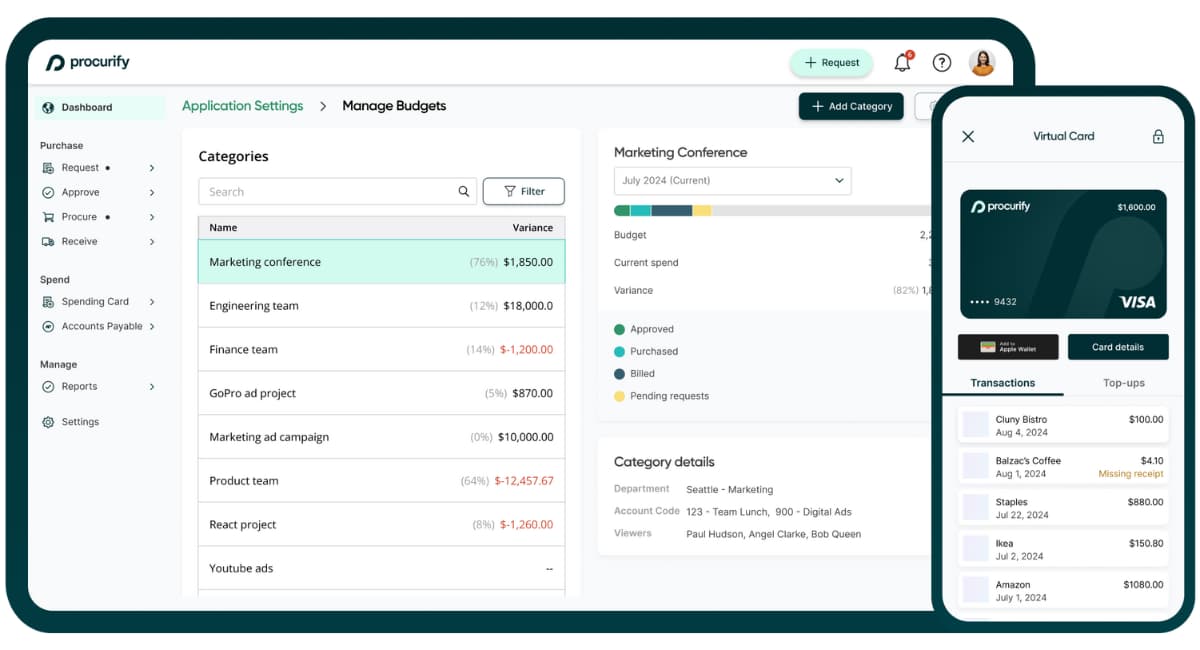
Procurify aims to make purchasing straightforward and efficient. This purchasing software is visually appealing and easy to adopt for all team members, allowing finance and operations departments to minimize process corrections and invoice chasing.
Best features:
- Real-time budget tracking: Keeps spending in check with immediate updates.
- Custom user control: Tailors the system to meet specific organizational needs.
- Electronic purchase order approval: Streamlines the approval process for purchase orders.
- Mobile apps: Provides the flexibility to manage procurement on the go.
| Pros | Cons |
|
|
Pricing: Available upon request.
8. JAGGAER ONE
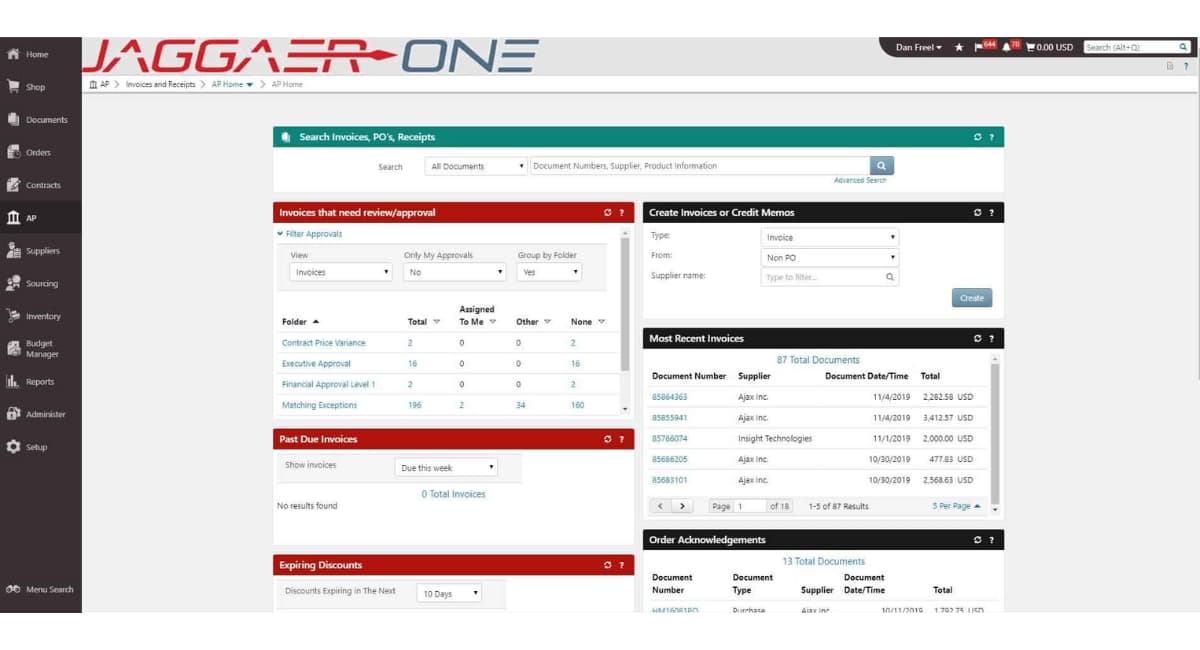
JAGGAER offers a cloud-based, integrated procurement and vendor management software solution renowned for managing the entire procurement lifecycle. It is particularly favored in higher education and government sectors for its scalable, customizable platform.
Jaggaer’s suite includes e-Procurement software, strategic sourcing, supplier management, contract lifecycle management, and spend analytics, providing unparalleled visibility and insights into procurement software operations.
Best features:
- Scalable platform: Adapts to the size and complexity of any organization.
- Supplier management: Streamlines supplier onboarding and collaboration.
- Contract management: Automates and manages the entire contract lifecycle.
- Spend analytics: Delivers insights for better spend management decisions.
| Pros | Cons |
|
|
Pricing: Available upon request
9. Coupa BSM
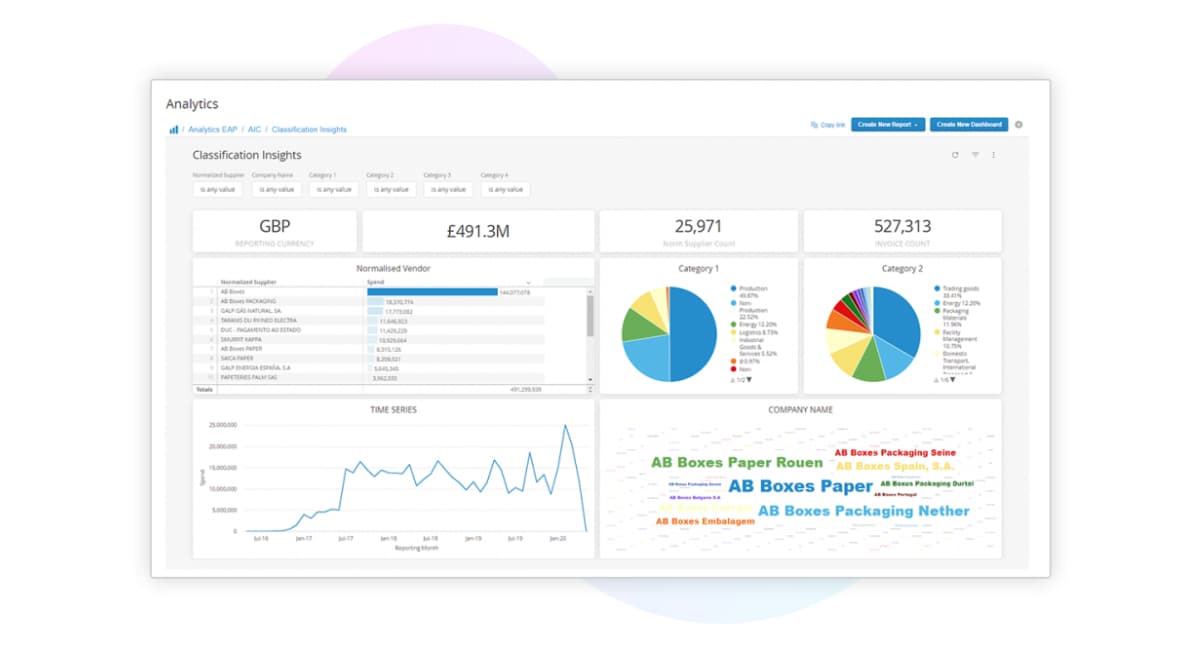
Coupa’s BSM platform provides end-to-end processes that drive collaboration among business leaders across supply chain, procurement software, finance, treasury, compliance, and IT.
It aims to give companies the visibility and control they need over their spend management. Coupa is known for its ease of use and intuitive user interface, which simplify navigation and procurement tasks.
Best features:
- Unified spend management: A single source for all spend management needs, offering unparalleled control and visibility.
- Requests and approvals: Centralizes and efficiently manages requests, ensuring they reach the correct approvers.
- Invoices and expenses: Automates Accounts Payable with multi-level automated invoice validation and dynamic approval workflows.
- Vendor management: Integrated vendor onboarding and management solution helps vendors self-service and eliminates silos.
| Pros | Cons |
|
|
Pricing: From ~RM10,225/month (USD 2,500/month listed on Capterra; actual quote may vary).
10. Team Procure

Team Procure provides a comprehensive set of tools that streamline the procurement process, from request management to warehouse inventory management.
The platform supports RFQ and e-auction negotiations (e-procurement software), helping businesses secure the best supplier deals. It also enables the generation of custom reports based on department, project, or category, aiding in data-driven decision-making..
Best features:
- Request management: Simplifies the creation and tracking of procurement requests.
- Procurement management: Manages the entire procurement cycle effectively.
Inventory management module: Keeps track of inventory levels and movements. - Approval workflow: Streamlines the approval process with sophisticated solutions.
- Supplier management: Enhances supplier relationships and performance tracking.
| Pros | Cons |
|
|
Pricing: From RM1,023/month (USD 250/month).
11. Precoro

Precoro simplifies the procurement process with its user-friendly interface and powerful features. It allows you to create, approve, and track purchase orders with just a few clicks.
The platform manages suppliers, item catalogs, inventory, and more in a single centralized system. Common industries that use Precoro include biotechnology, construction, technology, healthcare, manufacturing, and hospitality.
Best features:
- Customizable workflows: Tailor the approval process to fit your company’s structure.
- Amazon punch-in: Easily transfer orders from Amazon Business.
- Real-time budget tracking: Keep a close eye on your spending and never exceed your budget.
- Centralized supplier management: Manage all supplier information in one place.
| Pros | Cons |
|
|
Pricing: Starting from RM800/month (per the source you provided)
12. GEP Smart
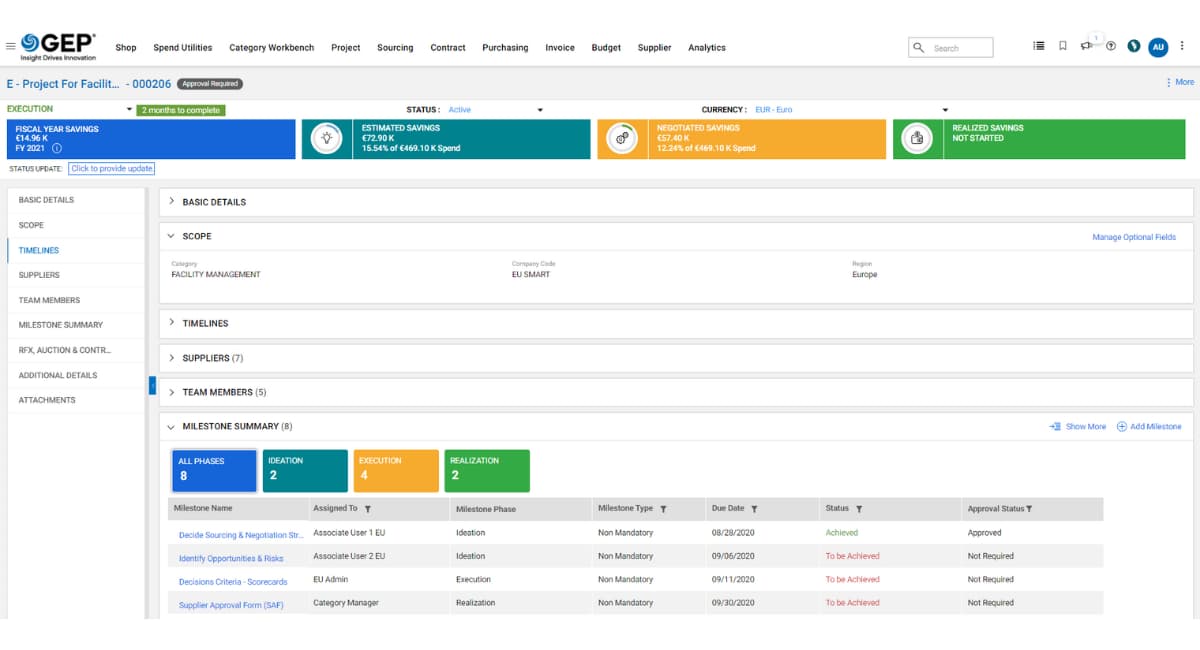
This seamless integration across procurement stages makes GEP Smart a versatile tool for organizations looking to optimize their procurement processes.
Best features:
- Unified S2P platform: A single solution for all procurement needs, from sourcing to payment.
- Cloud delivery model: Ensures accessibility and scalability for businesses of all sizes.
- Integration capabilities: Offers full integration with existing systems, enhancing procurement operations.
- User-friendly interface: Known for its intuitive design, which simplifies user interaction.
| Pros | Cons |
|
|
Pricing: Available upon request
13. Salesforce

Salesforce is best known for its CRM, but it can also act as an adaptable purchasing system software. With its procurement plug-in, businesses can manage supplier data, approvals, and purchase orders all in one place. It’s a strong choice for companies using procurement software Malaysia to streamline operations.
The platform offers end-to-end automation, from vendor management to real-time spend analytics. Its flexible workflows and AI-powered reports help improve visibility and decision-making. Integration with ERP and financial tools ensures a smooth and connected procurement experience.
Best Features:
- Vendor and supplier management tools that centralize data and monitor performance
- Automated requisition and purchase order
- Configurable approval workflows for policy
- Real-time dashboards for spend tracking and analytics
- Integration with ERP, inventory, and finance systems
- Cloud-based access for both desktop and mobile
| Pros | Cons |
|
|
Pricing: From RM102/user/month (USD 25/user/month).
14. Oneflow

Oneflow is an all-in-one e-procurement software designed to simplify contract creation, signing, and tracking. It allows teams to collaborate in real time, edit documents directly, and manage every stage of the contract lifecycle. This helps businesses keep procurement organized and efficient.
The system automates approval routes, sends renewal reminders, and ensures secure digital signatures. It offers a centralized space to store and monitor contracts, improving compliance and reducing errors. Integrations with CRM tools also enhance productivity and visibility.
Best Features:
- AI-powered contract analysis and clause detection
- Secure e-signature and automated approval routing
- Real-time collaboration and live document editing
- Centralized digital repository for signed contracts
- Integration with CRM and project management tools
| Pros | Cons |
|
|
Pricing: From RM81/user/month (EUR 17/user/month).
Procurement Key Statistics for 2025
Procurement software companies is no longer just for corporations; institutions, including schools, are increasingly relying on digital solutions to streamline sourcing, supplier management, and budgeting. With growing demand for automation and efficiency, procurement technology is evolving rapidly.
To highlight the impact of e-procurement software companies, we’ve gathered key statistics that demonstrate its growth, challenges, and adoption trends:
- The global procurement software market is projected to grow by 10.20% from 2023 to 2028 due to increasing automation needs and the push to minimize human error (Mordor Intelligence, 2023).
- 37% of procurement teams prioritize cost reduction, followed by 18% focusing on digital transformation and 17% on supplier sourcing (Herrmann, 2022). Schools, in particular, benefit from automation to optimize budgets and reduce unnecessary expenses.
- Although 80% of school budgets go to employee salaries, procurement still plays a key role, with 11% allocated to food contracts and 7% to educational supplies (NCES, 2023).
- 94% of public schools now procure digital devices to support hybrid and remote learning, reflecting the growing need for efficient procurement strategies.
- The top drivers for e-procurement software adoption include supply chain management (55.3%), centralized supplier data (38.8%), and automated purchase orders (36.2%).
- 55% of procurement departments report struggling to leverage data effectively without digital tools, underscoring the value of procurement analytics in reducing costs and mitigating risks (PwC, 2022).
As e-procurement software processes become increasingly complex, businesses and institutions must leverage digital solutions to optimize costs, ensure compliance, and enhance operational efficiency.
Challenges in Implementing Procurement Software Malaysia
Switching to procurement software Malaysia (including e-procurement software) can instantly improve visibility and control, but in practice, teams often hit a few predictable roadblocks. Knowing these early helps you plan change management, protect ROI, and choose the best procurement software that fits your workflows.
- Preference for legacy systems: Teams may resist moving from emails and spreadsheets to a new procurement software, even if it reduces manual work and errors.
- Data organization and migration readiness: An e-procurement software rollout often exposes messy vendor, PO, and invoice data, so data cleansing and structuring become a must.
- Budget concerns for new technology: Stakeholders may hesitate at the upfront cost, even though the best procurement software typically pays for itself through savings and improved compliance.
- On-demand support after go-live: Training alone isn’t enough, users need in-workflow guidance to follow governance, select preferred vendors, and stay compliant inside the procurement software Malaysia setup.
Types of Procurement Software
There are various types of procurement software, each tailored to specific needs in the sourcing and purchasing cycle. For companies looking to improve operational efficiency, especially when scaling, choosing the right procurement system in Malaysia helps prevent inefficiencies and overlapping tools. Below are the most widely used types:
- Source-to-pay software: Offers a complete solution that handles everything from vendor selection to final payment, integrating each step into a centralized e-procurement software platform.
- Spend and accounts management tools: Automates invoice processing and monitors company expenses, helping businesses avoid late payments and maintain financial accuracy.
- Contract management systems: Tracks contracts through their entire lifecycle, from drafting and approvals to enforcement and renewal reminders.
- Purchase automation software: Streamlines tasks like purchase requests, order approvals, and delivery tracking. This kind of purchasing system software helps procurement teams work faster with fewer errors.
- RFP and bidding tools: Assists in managing vendor proposals, comparing offers, and selecting suppliers using structured templates and automation.
- Expense control platforms: Provides insight into procurement-related spending and helps companies stay within budget while optimizing resource use.
- Strategic sourcing tools: Supports structured sourcing projects, category planning, and supplier evaluation to maximize long-term value.
- Vendor management software: Centralizes vendor data, tracks performance, and improves communication with suppliers throughout the procurement software lifecycle.
- Inventory and warehouse tracking tools: Manages stock movement, categorization, and storage to ensure procurement aligns with inventory levels and demand.
Overall Comparison of Procurement Software in Malaysia
From our comprehensive analysis, we can now compare the standout choices in greater detail:
| Provider | Connection Quality | Bank Coverage | Ease of Integration | Data Enrichment |
|---|---|---|---|---|
| HashMicro | ||||
| SAP Ariba | ||||
| Tipalti | ||||
| ADAM | ||||
| Syspro | ||||
| Ecount | ||||
| Procurify | ||||
| JAGGER ONE |
What Features to Look for in Procurement Software?
The best procurement software Malaysia helps teams reduce manual purchasing work, centralize contract files, and consolidate supplier communication in one place. Ideally, procurement software should provide a unified dashboard to track purchase requests, manage suppliers, approve orders, and process invoices efficiently, so the entire workflow runs faster and stays auditable.
When evaluating procurement software in Malaysia (including e-procurement software), focus on features that address today’s pain points while supporting future growth. Here are the most important capabilities to prioritize when choosing the best procurement software for your business:
- User-friendly interface: Look for an intuitive UI that’s easy for procurement teams and non-procurement users submitting purchase requests, to keep adoption high.
- Automation capabilities: Strong automation reduces repetitive work and errors, such as automated approval workflows (by spending thresholds), automated purchase order generation, and automated invoice matching (3-way matching).
- Supplier management: A solid e-procurement software should support vendor onboarding, centralized supplier records, communication tools, performance tracking, and contract storage, ideally with supplier scorecards and risk assessment.
- Integration flexibility: The procurement software should integrate smoothly with ERP, accounting, and other business systems. API access and pre-built integrations reduce implementation friction and keep data consistent across tools.
- Spend analysis & reporting: Real-time spend visibility with customizable dashboards and drill-down reports helps identify savings opportunities, control budgets, and evaluate supplier performance.
- Contract management: A structured contract lifecycle feature tracks terms, renewals, amendments, and compliance requirements, improving transparency while reducing financial and legal risks.
- Automation and notifications: Beyond workflow automation, real-time notifications ensure urgent approvals, supplier updates, or invoice exceptions don’t get stuck, keeping purchasing cycles on schedule.
- AI & machine learning (advanced): For higher procurement volumes, AI can enhance spend analysis, supplier risk signals, and invoice processing accuracy, making the system smarter as usage grows.
- Compliance & risk management: Prioritize audit trails, automated compliance checks, supplier risk assessments, and reporting tools to maintain procurement transparency and prevent policy violations early.
By aligning these features with your workflow, the right procurement software Malaysia can improve accuracy, reduce costs, strengthen supplier relationships, and increase operational efficiency, while ensuring your e-procurement software remains scalable as your purchasing needs expand.
How to Choose The Right Procurement Software for Your Business
Now that you’ve explored 14 of the best procurement software in Malaysia and globally, you might feel overwhelmed choosing the right one.
Choosing the best procurement software for Malaysian companies involves carefully considering several factors to ensure that the software aligns with the company’s specific needs and operational workflows.
Here are some key points to consider:
- Assess your needs: Understanding your company’s procurement needs is essential. Pinpoint current challenges and desired features, such as order automation, vendor management, spend analysis, and system integration.
- Scalability and flexibility: Choose scalable procurement software for growing transaction volumes that is adaptable to evolving business processes.
- Integration capabilities: Select procurement software that integrates well with existing systems like ERP software and accounting tools, ensuring efficient data flow and less manual entry.
- User-friendly interface: Choose the best procurement software with a user-friendly design that is easy to use and requires little training.
- Security and compliance: Ensure procurement software meets top security standards and aids in compliance with procurement regulations.
- Vendor credibility and support: Verify the vendor’s market reputation through reviews, case studies, and feedback from Malaysian firms, ensuring they provide strong support and software updates.
- Cost-effectiveness: Consider the total cost of ownership, including implementation and maintenance, ensuring the software provides long-term cost savings.
- Demo and free trial: Request a demo and use free trials to test the software’s functionality and confirm it meets your needs.
To check a software’s credibility, you can visit industry forums, read online reviews, and ask for references from the vendor. Additionally, attending industry events and networking with peers can provide insights into the software’s performance and reliability.
It’s also advisable to consult with IT professionals and procurement experts who can offer guidance based on their experience and knowledge of the market.
If your business handles production or works with suppliers in the manufacturing area, you may also find our recommendations on manufacturing procurement software helpful for exploring more specialized tools.
Conclusion
The shift toward digital procurement has transformed how businesses operate. Using e-procurement software helps companies reduce manual errors, speed up purchasing, and strengthen supplier relationships. This approach improves efficiency and supports better cost control across all departments.
Among the many options available, HashMicro’s procurement system in Malaysia stands out for its automation, flexibility, and integration features. It simplifies complex processes such as purchase approvals, supplier evaluations, and spend tracking, allowing businesses to manage procurement more effectively.
To improve your purchasing efficiency, consider implementing HashMicro’s purchasing system software. Schedule a free demo today and discover how this smart solution can streamline your workflows, enhance transparency, and bring measurable results to your business operations.

FAQ about Procurement Software
-
What are the key features to look for in procurement software?
Key features to consider in procurement software include purchase order management, supplier management, budget tracking, approval workflows, spend analysis, and integration capabilities with existing systems.
-
How does procurement software integrate with other business systems?
Procurement software often integrates with ERP systems, accounting software, and other business management tools to provide a seamless flow of information across different departments. This integration ensures that procurement activities are aligned with financial and operational data and improved efficiency.
-
How can procurement software help manage supplier relationships?
Procurement software aids in managing supplier relationships by providing tools for supplier evaluation, performance tracking, and communication. Features like supplier portals, contract management, and automated RFQ (Request for Quotation) processes enable businesses to maintain transparent and efficient supplier interactions.
-
Is procurement software scalable for growing businesses?
Yes, procurement software is designed to be scalable to accommodate the needs of growing businesses. Many solutions offer modular features that can be added as the business expands.
-
What are the costs associated with implementing procurement software?
The costs of procurement software Malaysia vary widely depending on the features, scalability, and vendor. Pricing models can include monthly subscriptions per user or transaction-based fees.
-
What is procurement software as a service (SaaS)?
Procurement SaaS is a cloud-based procurement system you access via subscription, where the vendor hosts the platform and handles updates, security, and maintenance. It helps teams run purchasing workflows, like requisitions, approvals, POs, and supplier management, without on-premise infrastructure.
-
What are the key capabilities and features of an effective AI-powered procurement software?
It should cover core procurement workflows (PR/PO, approvals, supplier onboarding, invoicing/3-way match) and use AI to reduce manual work and improve decisions. Key AI features include spend insights, smart supplier recommendations & risk flags, anomaly detection, and document intelligence for contracts/invoices, supported by strong automation, integrations, and audit controls.



